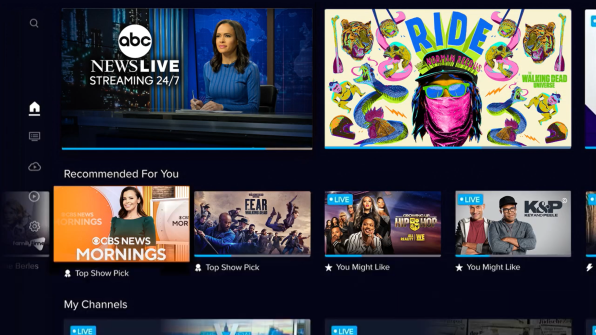Sling TV just launched a totally free network with 210 channels
Dish Network’s Sling TV, which is the OG of cord-cutting services, is trying to lure cost-conscious consumers.
The company on Thursday announced Freestream, a rebranded and beefed-up advertising-supported streaming television service that will be free to users.
Available initially on Roku devices, mobile phones, and tablets, Freestream will offer users over 210 channels and more than 41,000 titles on demand. Additional content will be added through the year. And the service will be available on LG, Samsung, and Vizio smart TVs, as well as Sling-compatible devices, in the coming months. The service is an expansion (and renaming) of the existing Sling Free service, which offered 150 channels.

“We know some people want free content, some may want a year-round paid subscription, while others may want to subscribe for certain events or shows,” said Gary Schanman, group president, Sling TV. “We have coupled world-class content with the option to easily flex in and out of premium pay TV.”
Beyond its free television offerings, Freestream offers viewers the ability to sign up for Sling’s Orange and Blue base services (each offers different channel mixes), as well as over 50 standalone streaming services.
Among the networks offering free programming are A&E, CNN, ESPN, TBS, and TNT. Viewers can also find channels dedicated to specific programs, including The Walking Dead, Portlandia, Mystery Science Theater 3000, and Alf (really).
While Sling was one of the early flag bearers of cordless television offerings, it has a lot of competition in free TV world. Several brands are already established, including Amazon’s Freevee, Fox’s Tubi, and Pluto TV. And YouTube is reportedly testing a free TV service of its own.
All of those services have significant viewership numbers. Pluto, which is owned by Paramount, had 72 million active users in the third quarter of 2022. It’s aiming for 120 million users by the end of 2024. That represents nearly 1% of total TV viewership in the U.S. and puts the service just below HBO Max in total viewers.
Tubi, meanwhile, reported last May 51 million active users, who watched 3.6 billion hours of content in the past year. And, in January, the service struck a content deal with Warner Bros. Discovery that will see 14 WB-branded channels and 225 titles added to its service.
Freevee (formerly IMDb TV), meanwhile, benefits from Amazon’s original programming and has signed a licensing agreement with Disney Media and Entertainment, which brought it films including Deadpool and Hidden Figures. A previous deal with NBCU gives it the exclusive network window for films from the 2020-21 slate of Universal’s.
That could mean that despite the new name and expanded offering, Freestream could be at a disadvantage. Sling’s audience has been dwindling fast in recent years. In the fourth quarter of 2022, the service saw 75,000 subscribers cancel, taking its total to 2.33 million. Dish Network’s satellite service has about 7.4 million subscribers.
More importantly, though, Dish is not a content company, so it will face challenges differentiating Freestream from the competition. The company is hoping its ancillary services like its search functionality, autoplay, and advertising technology make it a better user experience.
Free ad-supported streaming television (dubbed FAST by industry insiders) is another avenue for content providers to monetize their shows and films. The structure of the offerings lets people binge but also tune in whenever they want. It has seen rapid growth in the past few years as consumers grow tired of the escalating costs of streaming services.
How rapid? A TiVo survey, released last October, found that FAST and ad-supported nonpaid streaming services made up 22% of all viewing time in the second quarter of 2022, compared to just 10% in the fourth quarter of 2021.
Correction, February 14, 2023: A previous version of this article misstated some of the Sling channels included in Freestream. Content from Bravo and USA is not included.
(51)



